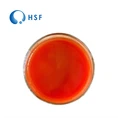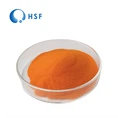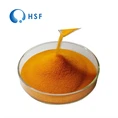Vitamin E can be divided into natural and synthetic vitamin E. Natural vitamin E has 8 structures, namely , , , δ tocopherol and , , , δ tocotrienols. The biological activity of natural vitamin E is higher than that of artificial synthesis, and the most active is natural D- -tocoferol.

Fuente de vitamina E
La vitamina E natural se encuentra ampliamente distribuida en los tejidos vegetales, especialmente en frutos secos, aceites vegetales y hortalizas. Los tocoferoles suelen ser mucho más altos en los aceites vegetales que los tocotrienoles (excepto el aceite de coco). El aceite de germen de trigo tiene el mayor contenido de vitamina E y un alto contenido de -tocoferol. El contenido de tocoferol en el aceite de maíz y el aceite de soya es superado solo por el aceite de germen de trigo, y el contenido de -tocoferol en estos dos aceites es mayor.
Bioactividad de la vitamina E
The structure-activity relationship study of vitamin E shows that the hydroxyl group in the molecule is the active group and must be in para position with the heterocyclic ring atom. The more methyl groups on the benzene ring, the stronger the activity, shortening or removing the side chain in the molecule reduces or disappears the activity. The three-dimensional structure of vitamin E also has an effect on the activity. And the activity of D-alfa tocoferol is the strongest.
Propiedades antioxidantes de la vitamina E
La vitamina E se puede utilizar como antioxidante para el aceite y es un producto antioxidante natural y beneficioso para el cuerpo humano.
Los radicales libres juegan un papel importante en el metabolismo fisiológico normal del cuerpo humano. Debido a que el tocoferol tiene un grupo hidroxilo activo en el anillo de benceno, tiene reducibilidad y puede proporcionar un solo electrón. Cuando los radicales libres ingresan a la fase lipídica y experimentan una reacción en cadena, el tocoferol puede capturar los radicales libres, bloqueando así la reacción en cadena de los radicales libres y protegiendo al cuerpo de la oxidación.
The antioxidant properties of various vitamin E are opposite to the strength of physiological activity. The antioxidant properties from strong to weak are: δ-tocopherol>γ-tocopherol>β-tocopherol>-tocoferol. Los tocotrienoles son más grandes que los tocoferoles correspondientes.





